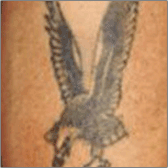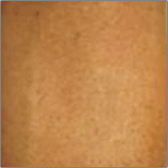

If you have a tattoo that you wish to have partially or completely removed, there are many options available.
Laser removal: Today, lasers are the most common method of tattoo removal. They work by targeting the ink with pulses of highly concentrated light that break the ink into tiny fragments, which are then cleared away via your own immune system. However, this isn't all done with just one treatment. The more treatments you have, the more the laser can penetrate to destroy the ink. But, the more treatments you have, the more damage you do to your skin, causing painful blisters and scabs that can eventually lead to scarring. Experts in removal therapy say that technology has advanced to the point where scarring is minimal, sometimes non-existent, but this can vary depending on the situation.
Intense pulsed light (IPL) therapy: This is the newest and greatest dermal enhancer currently being used. Instead of laser light, it uses high intensity light in pretty much the same manner. A gel is applied to the skin and then a wand is used to emit pulses of light onto the skin area being treated. This method is said to be less painful than laser therapy, and more effective, resulting in less total treatment sessions.
Dermabrasion: The treatment involves using a hand held tool to scrape away the layers of tattooed skin. High speed scuffing off will be painful, and does cause some bleeding so you will likely be given a local anesthetic. Once the tattoo has been sufficiently removed, the surgeon or doctor will apply a layer of antibacterial ointment and a bandage.
Read more about Microdermabrasion
Surgical excision: This procedure removes the tattoo by cutting it directly out of the skin. For a smaller tattoo this is an ideal procedure, but can cause deeper scarring. For larger tattoo removal by excision, a skin graft from another area of the body may be used.
Recovery time: Depends on the treatment.